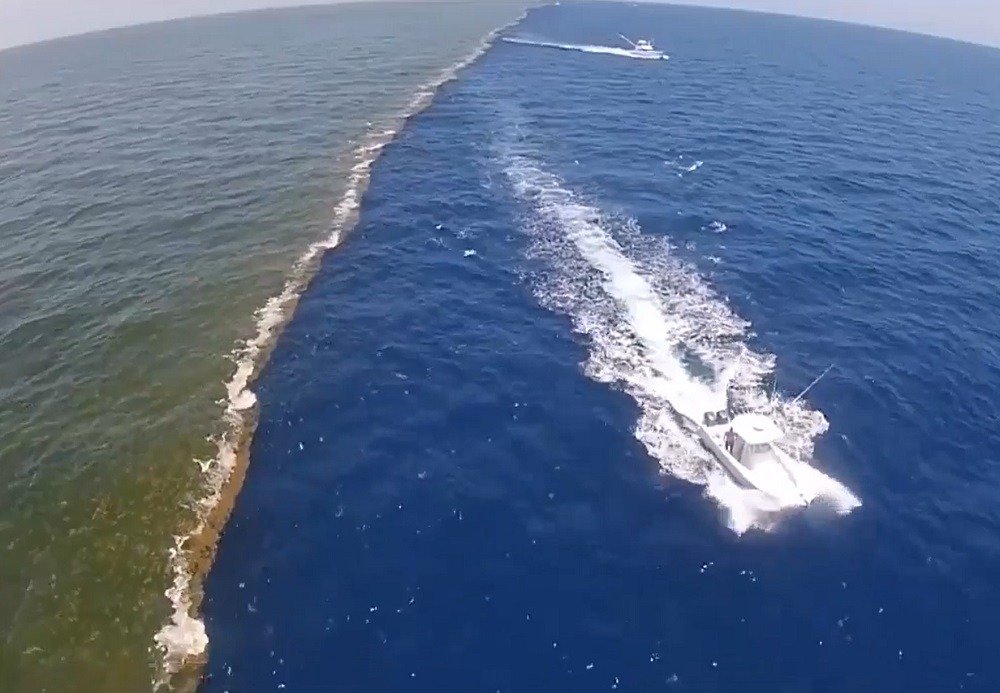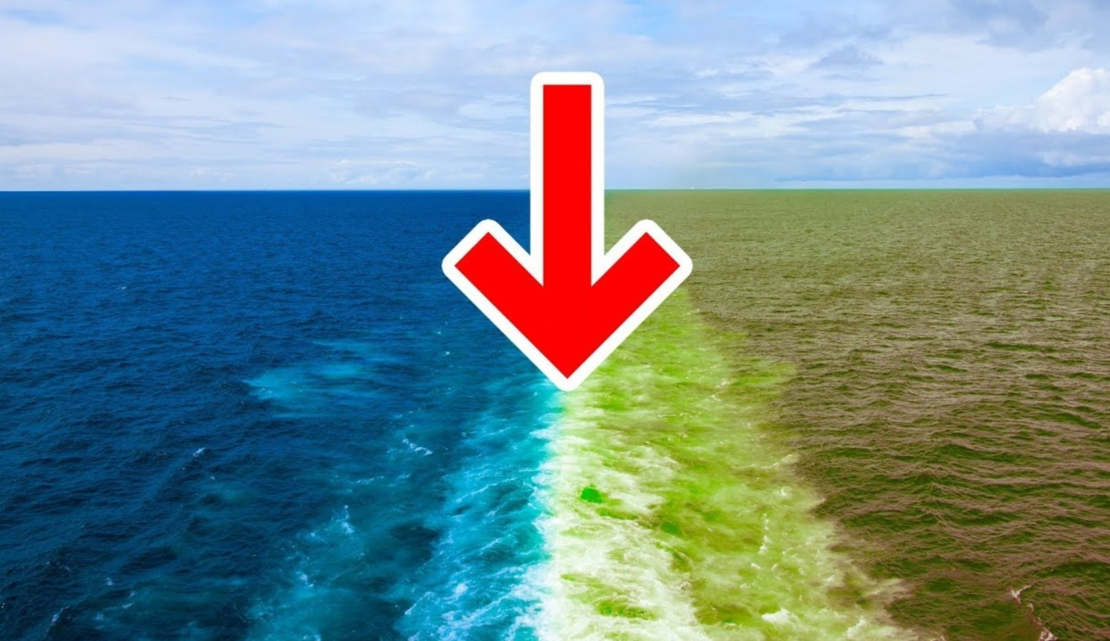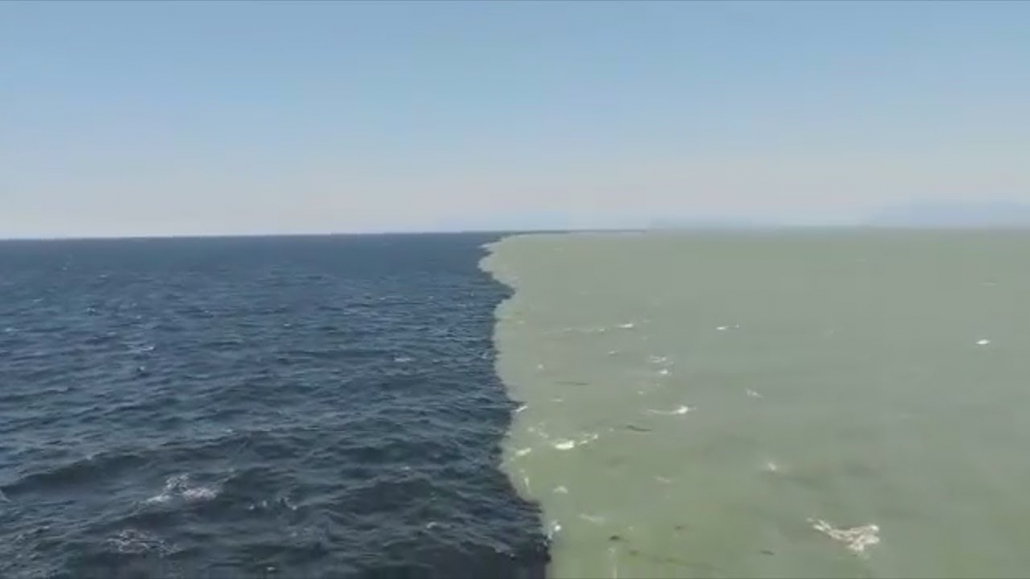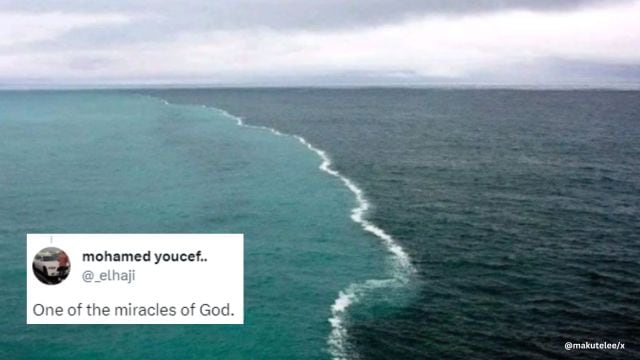What Two Oceans Meet But Don T Mix

Okay, picture this: You're at a giant cosmic smoothie bar. Two massive pitchers, one filled with electric blue lemonade (representing the Atlantic Ocean) and the other with murky green apple juice (the Pacific). Now, imagine pouring them both into the same enormous glass!
What happens? You'd expect a blended, funky-colored concoction, right? Maybe a "Bleu-Green Apple Blast" or something equally questionable.
Well, Mother Nature throws a curveball. Instead of swirling together in perfect harmony, the Atlantic and Pacific Oceans meet... but they mostly just hang out side-by-side, like frenemies at a school dance.
The Great Oceanic Wall
That's right! There's this visible line where the two oceans seemingly bump noses but refuse to fully mingle. It's not a solid wall, mind you, more like a shimmering, watery border patrol.
We are talking about the spot where the Atlantic and Pacific Oceans are supposed to meet. But do they, really? Not really!
You can even see it! Videos and photos abound online, showcasing this phenomenon. It's like a watery optical illusion, where two distinct bodies of water politely decline to become one.
But… Why?
Alright, alright, let's dive into the "why" a little bit, without getting bogged down in too much science-y jargon. The main culprits? Salinity, density, and temperature.
Think of it like this: Ever tried mixing oil and water? They separate because they have different densities. The same basic principle applies, though it's a bit more nuanced with the oceans.
The Atlantic and Pacific often have different salt concentrations (salinity). The more salt, the denser the water.
Temperature plays a role too! Colder water is generally denser than warmer water.
And let's not forget about currents! These massive underwater rivers are constantly swirling and pushing water around, contributing to the separation.
More Than Just a Salty Standoff
This oceanic "un-mixing" isn't just a cool visual trick. It has a big impact on marine life. Different ecosystems thrive in waters with varying salinity and temperature.
Imagine if these oceans suddenly mixed completely! It could drastically alter the habitats of countless creatures, from tiny plankton to majestic whales.
The ecosystems of the Atlantic and Pacific are distinct, shaped by their unique chemical makeups.
The Myth of the "River"
You might have heard stories of a literal "river" flowing between the oceans. While dramatic, it's not entirely accurate. There isn't a defined, flowing river *within* the ocean.
Instead, it's more of a gradual transition zone where the waters meet and interact, but maintain their distinct characteristics. Like two opposing sports fans sitting next to each other at the game, they are in the same space but clearly support different teams.
So, next time you're daydreaming about the vastness of the oceans, remember the great oceanic divide. It's a testament to the fascinating complexities of our planet and a reminder that even the most immense forces of nature can have their boundaries.
It is quite amazing that two oceans can meet and not mix!
Now, go forth and impress your friends with your newfound knowledge of oceanic boundaries. You're practically a marine biologist now!


















